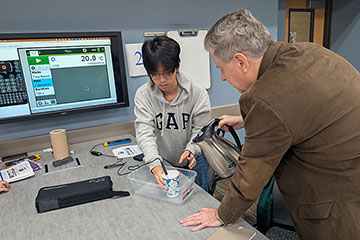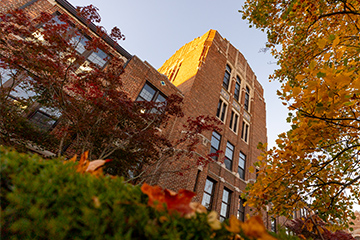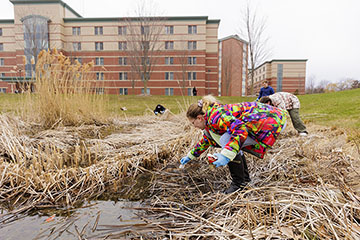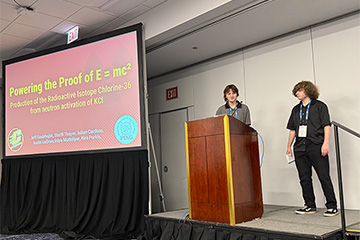What happens to wildlife in a heatwave?
Biology faculty member Thomas Gehring discusses the impact of weather conditions on Michigan’s animals
Experts on Point is a University Communications series focusing on CMU faculty who have special insights into interesting, important and timely topics.

Nobody in Michigan needs to be told that we officially have been in a heatwave. It takes only a couple of consecutive days above 90 degrees to get the label. As of July 9, much of Michigan had seven to 10 days of such hot, dry weather.
While many people can find air-conditioned escape from the heat, our woodland neighbors have had to try to cope. Most have suffered, some have died.
CMU Biology faculty member Thomas Gehring is an expert in the study of mammals, wildlife and landscape ecology. We talked with him about the impact of prolonged periods of heat and drought on Michigan wildlife.
“I think it boils down to climate change, and we will continue to see this issue more often.” — Thomas Gehring, Biology faculty member
Q: What are some common heat- and drought-related issues?
A: Prolonged periods of heat and dryness can trigger harmful stress and diseases in Michigan wildlife, such as deer and waterfowl, including common loons. Food sources like acorns and seeds are diminished by these conditions, which leads to increased competition, lower birth rates, starvation and death.
Q: Scientists say our climate is getting warmer. How will that impact Michigan's wildlife?
A: With more frequent weather extremes and continued warming, certain species will have increasing difficulty. But there also could be invasive, non-native species, such as nutria, that would prosper under those conditions and extend their range into Michigan, creating more competition for our native species and potentially introducing diseases.
Q: What diseases?
A: Drought and warmer temperatures fuel the expansion of animal diseases such as epizootic hemorrhagic disease, or EHD, which impacts white-tailed deer, and botulism in wild waterfowl. Neither disease has shown an immediate risk to humans at this point, however, pets such as dogs could acquire botulism if they were to eat a diseased dead bird.
Q: What do you see for the future of Michigan wildlife?
A: With climate change, we are going to see the problem of EHD more frequently. It has become a common phenomenon in the Southern states, especially at the end of summer. We've had a couple of stretches in Michigan in the 1960s and '70s, but now in the 2000s we have had more-frequent outbreaks. That and the early arrival of hot, dry conditions make me wonder what has changed. I think it boils down to climate change, and we will continue to see this issue more often.
The question is, do we just accept that, or do we try to address the underlying causes? In the meantime, the public can help in these hotter and drier times by reporting sick or dead wildlife to the Michigan Department of Natural Resources.



.jpeg?sfvrsn=2dd3cd2a_5)
